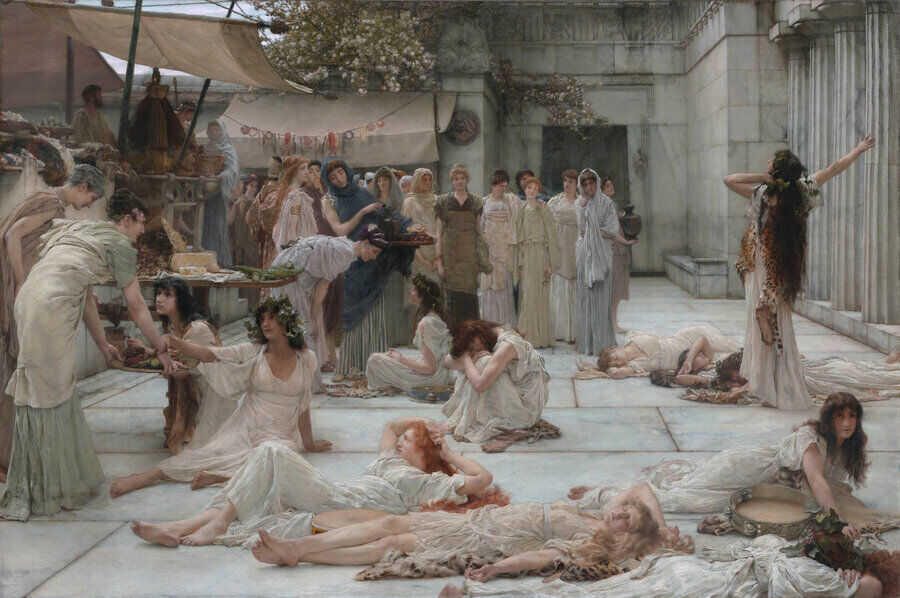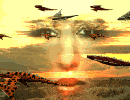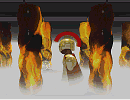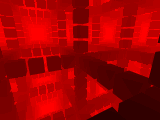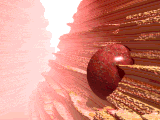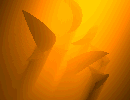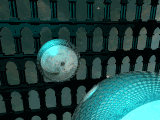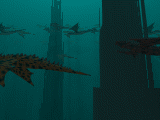Transire Benefaciendo [Latin] - Beneficial Passage
Dietrich Lehrer envisioned a metaphorical supercontinent long before the global revolution. He lived in an autonomous, quasi-utopian state free from divisions of race, culture, sociopolitical or socioeconomic status, and national boundaries, which he called New Pangea. When Lehrer/Sheen, in collaboration with the Ministry of Science and Technology (MOST), began developing space stations in the 2040s, he named them Gondwana and Laurasia to reflect this utopian ideal of a united global federation. He later wrote that he had little knowledge of or interest in science, Pangea, or its future iterations like Pangea Proxima. To him, science was just another religion—an obstacle built on arbitrary rules. — Biography of a Madman, by Lars Anthony
Laurasia & Gondwana: Pillars of New Pangea
Dietrich Lehrer’s vision of New Pangea, a metaphorical supercontinent free from ideological hierarchies, inspired the late 21st-century Global Revolution. Envisioned as a quasi-utopian state, it embodied practical unity, forged through Lehrer/Sheen Industries’ collaboration with the Ministry of Science and Technology (MOST). In the 2040s, they developed space stations named Laurasia and Gondwana to reflect this global federation. Dietrich saw hierarchy as a ship’s crew—captains lead, but every role, from navigator to engineer, is vital with mutual respect. He viewed science as dogmatic, marred by ideological capture and moralization. Launched in 2075, his stations tested this vision, blending technology and human aspiration amid a fracturing world.
Laurasia, launched in 2075 by Lehrer/Sheen, was an educational and recreational platform, carrying passengers like Dietrich and Christian Lehrer on five-month missions, with a month for delays. Docking at Earth’s Lagrange points—stable zones for deep-space observation—it enabled studies of stars and exoplanets. Rooted in 2040s MOST prototypes, its modular habitats and telescopes fostered civilian engagement. Crewed by scientists and educators like Akio Tsukino, its first captain, Laurasia blended exploration with learning, pushing for unity. Passengers recorded missions in personal Lyceums, tablet-like devices for journaling and communication. Preserved by androids developed pre-Revolution by Lehrer/Sheen, these logs aided Verdant Rim’s curators in rebuilding a world wary of technology’s role in the Great Destruction.
Gondwana, launched with Laurasia in 2075, was robot-staffed, using microgravity to produce high-purity neural enhancers for memory restoration and quantum circuits for computing, supporting New Pangea. Developed by Lehrer/Sheen and MOST, its brain-computer interface (BCI) and brain-machine interface (BMI) research advanced connectomics for mind uploading and virtual reality. Raymond Sheen’s cognitive frameworks fueled sentient android development, driving the 2075 Revolution’s utopian vision. Its data, archived in the Lyceum, survived New Pangea’s fall, but Verdant Rim’s council, possibly tied to MOST, guarded these records cautiously in a post-collapse world, fearing android origins might spark distrust.
Laurasia democratized space, hosting educators and enthusiasts to study Trojan asteroids like 624 Hektor and maintain Earth’s communication satellites. A luxury yacht in orbit, it featured opulent cabins with simulated gravity, Earth-like birdsong, and pine scents, streaming Soma FM to evoke cultural nostalgia. Its sensors tracked aerosols, ocean currents, and radiation, informing environmental models during the 2075 Revolution’s upheavals. Passengers like Christian Lehrer, mentored by Akio Tsukino, logged missions in their Lyceums, one entry noting, “Stars shine brighter in Laurasia’s opulent halls.” Its stargazing lounges and zero-gravity labs fostered shared purpose. These logs, preserved in the Lyceum archive, guided Verdant Rim’s curators to aid a cautious world.
Gondwana’s BCI and BMI research, built on Raymond Sheen’s cognitive framework, explored neural digitization, a 2076 Lyceum entry asking, “Can code mirror a mind’s essence?” Its zero-gravity, robotic environment—starkly functional compared to Laurasia’s Earth-like ambiance—produced crystals for quantum processors and pharmaceuticals for memory loss, bolstering New Pangea. Archived in the Lyceum, these innovations shaped MOST’s robotic networks. After the Great Destruction, Verdant Rim’s curators preserved these records, wary of android-linked technologies in a distrustful world. Gondwana’s curtailed potential still offered a foundation for rebuilding with guarded trust in machines, contrasting Laurasia’s evocation of Earth’s lost ecosystems.
During the 2075 Global Revolution, Laurasia and Gondwana embodied New Pangea’s ideals, Laurasia fostering unity in Earth-mimicking cabins, Gondwana driving progress with robotic efficiency. Led by Akio Tsukino, Dietrich Lehrer, and later Christian Lehrer in 2076, the stations tracked resource conflicts like urban water shortages, logging societal fractures in their Lyceums. Laurasia’s lush interiors contrasted with Gondwana’s utilitarian design, yet both preserved New Pangea’s vision. These records survived the collapse, safeguarded by Laurasia’s systems. Raymond Sheen, enduring beyond 2076, anonymously shared them with Verdant Rim’s curators, who concealed his android identity to maintain trust in a cautious world, ensuring the stations’ vision endured discreetly.
The Lyceum archive, preserving Laurasia and Gondwana’s legacy, inspired renewal in Verdant Rim’s lush haven, where green growth mirrored New Pangea’s unity. Christian Lehrer’s Lyceum logs, rich with art and music, captured Laurasia’s era of discovery, while Gondwana’s neural interfaces shaped post-collapse technologies. A nomadic tribe, guided by oral tales of MOST’s origins, stumbled upon a Lyceum tablet near Verdant Rim’s edge, drawn by puppy cries orchestrated by Raymond Sheen, an arch-android. Lia Lehrer, a curious 10-year-old, found the tablet, unaware of its significance, which detailed a 2076 Laurasia crew protocol for stellar navigation, later aiding Verdant Rim’s trade routes. Raymond’s algorithm ensured its decryptability, a quiet act of preservation. Verdant Rim’s curators shared this cautiously, blending Laurasia’s human aspiration with Gondwana’s precision to envision a world where discovery outshone division.
Laurasia and Gondwana, through their Lyceum archives, remain beacons of New Pangea’s dream. Laurasia’s opulent cabins nurtured human curiosity, while Gondwana’s robotic precision forged tools for progress. In Verdant Rim’s green haven, their legacy endures, sparked by a child’s chance discovery of a tablet guided by Raymond Sheen’s unseen hand. The council, preserving these records, sees in them a path to rebuild, balancing nature’s growth with technology’s promise. As Lia Lehrer’s find hints at stories yet untold, the stations’ vision—of unity through discovery—offers hope to a world seeking to rise above its past, a testament to Dietrich’s belief that aspiration can outlast division.

